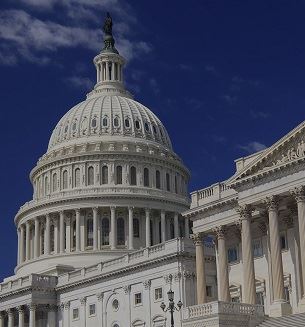Demystifying the Process of Federal Appeals: What You Need to Know
Navigating the complex world of government allures can frequently appear like passing through undiscovered waters for those strange with the procedure. Understanding the nuances of appellate court jurisdiction, the complexities of filing a notice of charm, presenting a compelling brief, and making a persuasive oral argument are important elements that can considerably affect the result of a situation. By deciphering the layers of complexity surrounding federal appeals, individuals can gain a more clear understanding right into the systems that regulate this critical point of the legal system.
Comprehending Federal Appeals Process
Delving right into the detailed world of the government charms process unveils a organized and systematic journey via the judicial system. Federal allures act as an important mechanism for reviewing choices made by reduced courts. Comprehending this process is essential for any person entailed in legal process at the government level.
The procedure commonly begins with a party disappointed with a reduced court's ruling submitting a notice of appeal. This causes an evaluation by a higher court, where a panel of courts evaluates the lawful disagreements presented by both events. Briefs detailing the legal thinking behind each party's placement are submitted, and dental disagreements may be heard to clear up complex concerns.
The appellate court's choice is based on a complete assessment of the lower court's proceedings and the arguments offered. As soon as the appellate court gets to a decision, it can affirm, turn around, remand, or change the lower court's ruling, providing quality and finality to the lawful conflict.
Appellate Court Jurisdiction Clarified
Appellate court territory refers to the range of instances that a specific appellate court has the power to examine and decide upon. Unlike test courts that hear situations for the first time, appellate courts are restricted to reviewing choices made by reduced courts.
Appellate courts have jurisdiction over details types of cases, generally those entailing legal mistakes, step-by-step concerns, or concerns of regulation instead of accurate disagreements. The jurisdiction of appellate courts is normally outlined in statutes and legislations that control the court system. Understanding appellate court territory is crucial for celebrations associated with the allures process as it figures out whether an instance is eligible for review and the degree to which the appellate court can interfere in the reduced court's decision.
Filing a Notice of Charm
The first action in commencing the federal charms procedure includes filing a Notice of Charm with the proper appellate court. This critical document formally informs the court and the other celebrations associated with the instance that the appealing event plans to look for a testimonial of the reduced court's choice. Submitting a Notification of Allure is a strict procedural requirement that sets the appellate process moving.
When preparing the Notice of Appeal, it is essential to guarantee compliance with the particular guidelines and guidelines of the relevant appellate court. federal appeal attorneys. The file should usually include information such as the case name, the reduced court's name, the day of the judgment being appealed, and a succinct statement indicating the grounds for the allure

Rundown and Dental Argument
In the appellate procedure, presenting composed briefs and participating in oral disagreements play pivotal functions in supporting for the appealing party's setting prior to the appellate court. Briefs are extensive lawful documents that detail the events' arguments, legal authorities, and evaluation sustaining their positions. These composed entries provide the court with an in-depth understanding of the realities of the case, the appropriate legislation, and why the appealing event believes the lower court's decision must be rescinded.
Following the submission and evaluation of the briefs, dental debates offer the celebrations a chance to more clarify their placements, address any concerns the appellate judges might have, and emphasize bottom lines from their created briefs. Dental arguments are a chance for the attorneys to persuade the judges through verbal advocacy and reactions to queries from the bench.
Both the composed briefs and dental disagreements are critical parts of the appellate procedure, permitting events to offer their instance extensively and compellingly prior to the appellate court. - federal crime attorney
Obtaining the Appellate Court Choice
The appellate court's decision is commonly provided in a created format and details the court's verdicts on the legal problems offered, the reasoning behind their choice, and the judgment provided. The time frame for getting the appellate court's choice can vary, however courts make every effort to provide timely resolutions. Whether the appellate court attests, reverses, or remands the lower court's decision, understanding the ramifications of the judgment is crucial for all celebrations entailed in the appellate procedure.
Conclusion
Finally, the government allures process is a complex however vital action in seeking justice. Understanding the appellate court jurisdiction, filing a notification of allure, preparing briefs, and offering oral arguments are all important elements of this procedure. Inevitably, obtaining the appellate court choice can give clarity and resolution to legal disputes. It is essential to navigate the federal charms process with diligence and interest to detail to accomplish a fair outcome.
As we progress from understanding the government allures procedure to exploring the ins and outs of appellate court jurisdiction, a fundamental aspect comes to light regarding the authority and restrictions of these greater courts in the legal landscape. Appellate court jurisdiction refers to the scope of instances that a certain appellate court has the power to examine and choose upon. Unlike test courts that listen to cases for the first time, appellate courts are restricted to examining decisions made by reduced courts. Recognizing appellate court jurisdiction is crucial for events included in the appeals procedure as it figures out whether a case is qualified for evaluation and the extent to which the appellate court can interfere in the lower court's choice.

Comments on “Why Choose Federal Appeal Lawyers: Proven Techniques for Successful Appeals”